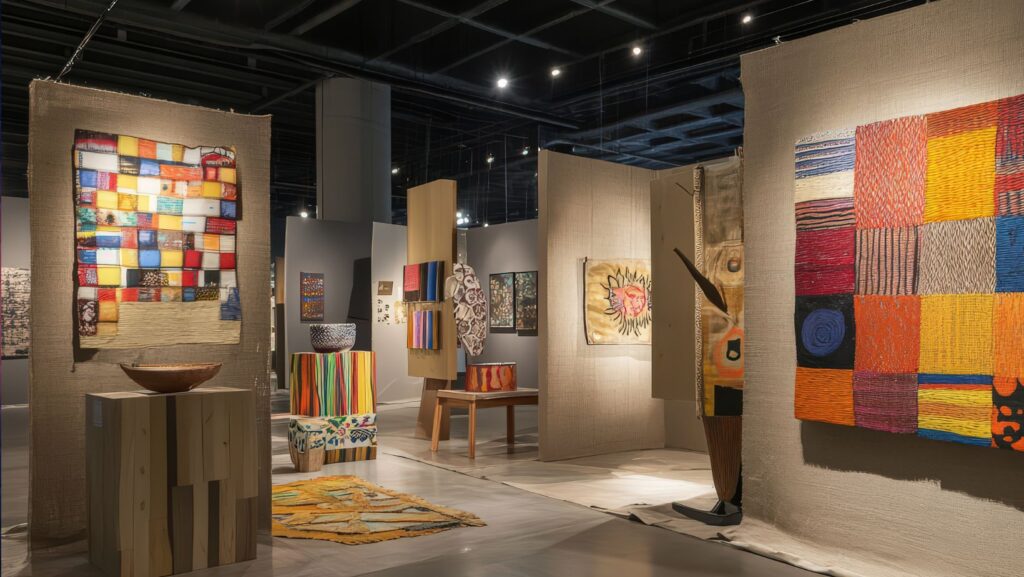A shared purpose exists between museums and cultural centers and heritage institutions as well as art galleries such as galleries: the mandate exists for safeguarding valuable objects through proper interpretation and presentation. Museum showcases suppliers extend equivalent importance to curators who receive public recognition for exhibition design through their behind-the-scenes work. The protective structure created by their craftsmanship alongside their engineering skills and their technical expertise enables artifacts together with artworks and historical pieces to be displayed safely through future generations.
Museum showcases that meet high-quality standards accomplish much beyond simple item presentation. They construct controlled display environments which help curate aesthetic narratives and provide ongoing protection to museum items. Museums that implement advanced technology alongside evolving visitor needs have seen a tremendous increase in value when they use professional showcase suppliers.
The Base Structure for Contemporary Exhibition Design
While museums compete in cultural spaces they need novel display systems which integrate security and aesthetic appeal with conservation requirements. Museum showcase suppliers now provide technical consultation besides manufacturing their cabinets. The company offers technical consultancy together with environmental engineering services and precise fabrication services and customized lighting design services alongside professional installation services at the customer’s location.
The professional supply team maintains constant collaboration with curators and designers and conservation teams to achieve international standard quality displays. The proper display case safeguards objects including archaeological artifacts besides sculptures and manuscripts and fossils and jewelry and large installations from dust and humidity threats and UV light damage and vibration damage and unauthorized access threats.
Choosing an appropriate collaborative partner becomes fundamental in this situation. Museums commonly select industry experts known as museum showcases supplier to meet their requirements for reliable craftsmanship along with customized display case solutions of Exhibition Displays designed to professional standards.
The Importance of a Reliable Supplier in the Curation Process
1. Tailored Display Solutions for Curatorial Vision
Each museum display starts from a basic idea. The objects are selected by curators while they also design how visitors become involved in the exhibition. Standard museum display suppliers guarantee your creative concepts will become physical display spaces without letting safety or visibility standards fall prey to compromise. Curators use custom showcases to:
- Present objects at perfect position and display orientation
- Keep a consistent thematic period
- Bring out emotional connections with museum visitors
- Use lighting designs and display arrangements to reveal cultural and historical importance
Exhibition cases of considerable size can be customized to accommodate exhibitions which require space for large objects or interactive installations or multiple tiered displays.
2. Conservation and Environmental Control
Regular preservation is among the primary functions that museums perform. Unstable heritage artifacts thrive in stable humidity and temperature environments and require protection from environmental airborne particles. Each design from their specialized supplier incorporates conservation engineering principles. A typical design includes:
- Tight room sealing
- Equipped silica gel holding areas
- High-efficiency HEPA air filtration
- Laminated anti-reflective glass surfaces
- Low intensity UV LED illumination
- Advanced microclimate stabilization systems
Museums can showcase precious delicate objects because of these protective features.
3. Robust Security Measures
Theft alongside damage risks both remain significantly reduced when showcases function as protective barriers. Authorized suppliers bring museum security standards into their showcases through:
Multiple-locking technology
Glass panels of varying degrees of safety
Framing made from stainless steel
Concealed hinge mechanisms
Remote security system monitoring capability
Professional exhibitions demand non-negotiable security systems because of the high value and unique nature of their displayed artifacts.
4. Aesthetic Harmony and Visual Experience
Display cases control the way visitors analyze an object. An artifact’s visual impact receives enhancement from professional suppliers’ compliant display methods which prevent any distracting elements. Professional suppliers include these orientation methods in their display practices:
- Framed so that it remains minimalist
- Visitor Lines optimized for unobstructed viewing
- Joints that do not show visible point connections
- Color palettes entirely neutral
- LED lighting systems which can be changed
- Showcases designed well guarantee that all visual attention falls on displayed objects.
5. Engineering for Durability and Longevity
Museums with strong visitor demand need display cases designed to survive countless years of use. The most dependable vendors select materials from powder-coated steel, laminated glass, aluminum alloy frames while applying environmentally safe finishes. suppliers review these components for long-term success in traveling gallery shows and outdoor exhibition environments.
Supplier Museum Partnership
Exhibition design requires teamwork in its development. Museums depend on suppliers to provide:
- A three-dimensional visualization of specific preview information
- Materials delivered in small representative portions
- Standardized installation services performed by experts
- Directions for regular building upkeep
- Personalized storage units and specialized display equipment
Through this collaboration exhibits become visually stunning while meeting both curator directives and exhibition coherence.
Contemporary Display Manufacturing Powering Innovations
Top industry suppliers implement state-of-the-art technology solutions inside their display units through:
- Programmable smart lighting systems enabling better lighting performance
- A connected sensor-based monitoring for measuring temperature and humidity.
- Interchangeable exhibition frames for adaptable display configurations
- Entire-visibility 360-degree glass presentation systems
- Glasses with anti-glare nano coatings
- Glasses with magnetic door-opening technology

Visitor experiences advance in combination with conservation hazard minimization because of these innovations.
Example Image featured on official Website
Below there is an image demonstrating professional display cases your company offers (from materials found at your website):
Standing Out with Your Business
Your manufacturing company focuses on producing large museum display cases which offer:
- Custom built precision-engineered cases for complete personalization
- Conservation services that meet international standards
- The locking systems alongside the glass protection ensure high-security standards
- Modern and classical exhibition rooms benefit from custom aesthetic designs
- Professional guidance spanning decor consultation through final installation stages
The exhibitions of museums while your business worked for galleries as well as cultural centers prove your value for constructing next-generation worldwide exhibitions.
Frequently Asked Questions
1. Why should museums work with a professional museum showcase supplier?
For museums professional tip suppliers deliver showcasing systems which pass three fundamental standards of which are curatorial criteria conservation demands and security management controls. Museums obtain condition-specific cases which professional suppliers build to withstand museum object preservation needs.
2. What features make a museum display case suitable for conservation?
Specialized display cases demonstrate conservation integrity through sealed airtight air control systems combined with UV protective glass filtering and humidity control capabilities and corrosion proof construction and stable low energy LED lighting.
3. Can museum showcases be customized for large or irregular objects?
Yes. Skilled suppliers create custom showcases for oversized, unique statues and ancient artifacts and immersive installations and other large or irregular museum objects.
4. How important is lighting in museum showcases?
Proper lighting achieves visual impact along with effective protection of exhibits. Suppliers specializing in museum cases produce LED lighting systems which operate at low UV levels while being adjustable to obtain visual focus and object preservation.
5. Do high-end museum showcases require maintenance?
To sustain artifact safety alongside extended operational performance museums should conduct routine assessments alongside surface care and case seal inspections and lighting system maintenance.
Conclusion
The exhibition suppliers establish the fundamental factors which define the standard, reliability and aesthetic appearance of museum display cases. They construct safe temperature-controlled spaces and use modern design with technical solutions to boost visitor engagement while enabling curators to confidently display cultural heritage items. Selecting an appropriate display supplier protects each cultural item from preservation damage while guaranteeing spectacular presentation quality.











